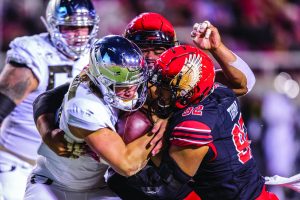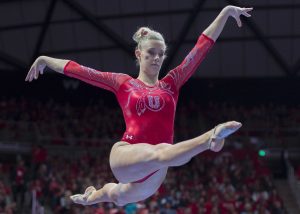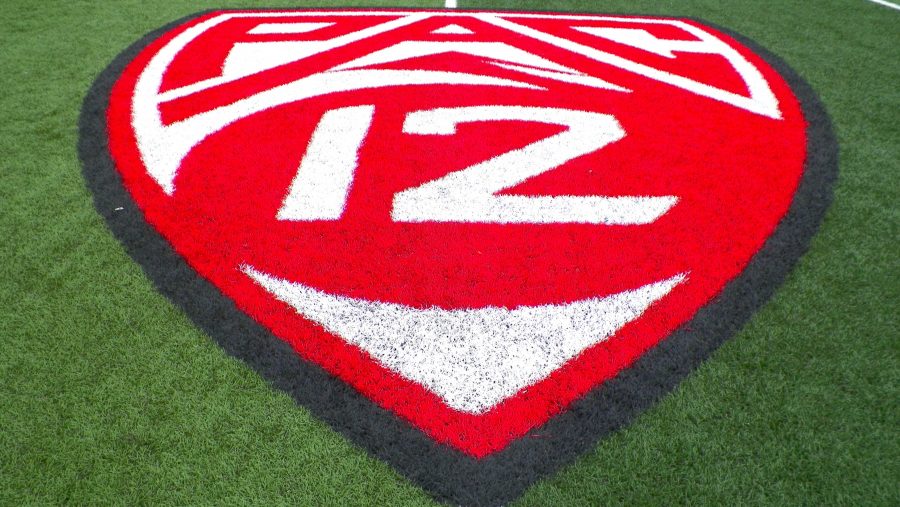It’s no secret that in college athletics, more people attend men’s sports than women’s, and by default, they collect more money for their schools and athletic programs. Athletic departments at universities still provide money to programs with lower attendance rates through various funds and donors, however.
At the University of Utah, there are 19 Division I sports teams. Eleven of these are women’s sports, and eight are men’s sports.
In a school as large as the U, money allocation rests heavily on the primary sport and that team’s success. The primary sport is usually the football program. A certain sum of money is given to the school based on how that team performs.

(Photo by Curtis Lin | The Daily Utah Chronicle)
At the U, it is primarily up to the football team to earn funding from various groups and their success heavily impacts the funding of other sports. The success of the basketball, gymnastics, volleyball and baseball teams all lie behind football. Every other sport relies heavily on these more popular teams and their success for funds.
In Utah, there is another way for teams to earn money that isn’t direct funding from donors and the school. Between the U and their rivals down south at Brigham Young University, there is a competition called the Deseret First Duel which exists over all sports throughout the entire year.
The duel comes up whenever there is a rivalry game. Based on the sport and its level of attendance and funding, the Deseret First Credit Union will award a cash prize to the winning team.
This friendly competition is one of the ways that Utah sports receive its funding for athletes, facilities and other various costs.
In addition to the duel, money also comes to the sports teams from donors outside of the program. Funding comes to the teams in the form of season tickets, events, merchandise and the Crimson Club.
At the U, the Crimson Club is the source of many athlete scholarships. Through donations and fundraising, the club allows many student athletes to follow their dreams in collegiate athletics.
According to their website, “The Crimson Club is the driving force of the athletic department, providing scholarships and the financial resources necessary to allow Utah student-athletes to excel not only athletically, but academically as well. Crimson Club members are loyal Ute fans who generously help talented students gain a great education from the U, while providing the financial support that allows Utah’s varsity teams to participate at the highest level in athletic competition.”
Donations made to the Crimson Club are streamlined to help student athletes train, compete and succeed at the highest level possible. They are focused on four main commitments: “Honesty, Excellence, Relationships, Service.” Donors can be confident that their money will go to a good cause for the school that they love. They also receive special perks at certain sporting events, such as football and basketball games.

(Photo by Kiffer Creveling | The Daily Utah Chronicle)
Another big way that teams gather funding is through building relationships with the community that the teams are a part of.
The U has what is called the Student Athlete Advisory Committee (SAAC). It is a club where athletes from each sport on campus get together and make themselves visible within the community.
“Creating a project, building a project, seeing it out to finish and having it be a success is rewarding to me,” said senior softball player Ally Dickman about her experiences volunteering. “Seeing all of your hard work turn into fruition is really rewarding.”
The SAAC works closely with local elementary schools where they read stories, play games and make themselves visible to the young kids in the local school districts. This is important to help the university maintain a strong bond between all levels of education.
In addition to working with schools, the athletes are out in the community working with the homeless population and various community service events to give back to the city and show that they are just as dedicated to Salt Lake as Salt Lake is to them.
Although volunteering in the community does not earn the teams’ immediate funds, it does make them more personable to the public. Their commitment to service can inspire people to attend games and get more involved in Utah sports, which translates to increased funding through ticket and merchandise sales.
Although each team is independent and they have ways to earn their own money, at a school this big, the teams really do feed off of the success of each other. In order for the whole department to succeed, there is more than just money or talent. It involves teamwork, support and a strong sense of camaraderie between athletes, coaches, staff members and the community to support the massive business that is college athletics.



